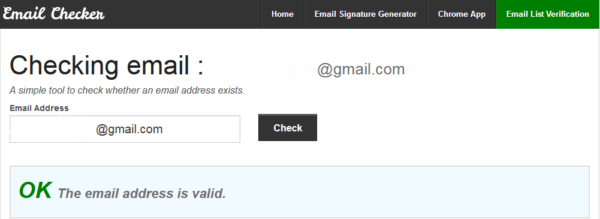
Prospecting for new B2B clients can be painful.
After months of reaching out to companies in your field, it can be disheartening when you haven’t made any progress in turning them into clients. But what if you were doing everything correctly and just one small thing was holding you back from gaining new business consistently?
Could the only thing holding you back from meeting your income or revenue goals be as simple as your prospect list? According to the American Association of Inside Sales Professionals (AA-ISP), nearly 50% of sales reps named lead quality and quantity as their top challenge.
Their findings drive home an important fact: You can’t expect to get quality leads unless the contact information on your lists is of the highest quality.
Let’s explore 7 common flaws in most B2B prospect lists, and show you how to fix them—once and for all.
1. Your List Was Purchased from a Data Vendor
One of the biggest errors you can make in B2B prospecting is renting or buying a list from a vendor. While some companies offer trustworthy, accurate data, it can be hard to know what you’re getting until you’ve invested time working with the list. Some typical problems with third-party lists include:
Companies that have gone out of business—since most businesses soon fail. A large chunk of companies in a 2-year old list will be out of business when you try to reach them.
The contact information is available to anyone willing to pay for it. The people being contacted are often bombarded with solicitations and are less likely to respond. I’ll discuss this in more detail, later.
Outdated contact information is guaranteed. The question becomes: what percentage of your data is inaccurate? People soon find new jobs or change roles within the same company, making a percentage of the data you purchased, incorrect and unreliable.
Most list vendors guarantee a certain percentage of accurate contact information and some will provide refunds for any incorrect data you find. They put such policies in place because they’re fully aware that a portion of the records sold will be stale. There’s no better way to save precious time and ensure your prospect list is nearly 100% accurate—than by building your own!
2. You Haven’t Done Ample Research
Before starting a lead generation campaign, it’s important to know the “who, what and where” of your audience:
- Who are your ideal clients?
- What problems are they experiencing in their businesses, and what can you offer to fix them?
- Where do they usually go to find help for their business issues? Where do they spend time outside of work?
If you haven’t clearly defined your ideal persona and made sure that persona actually wants or needs your products or services, how do you know if pursuing those individuals will be worth your time? You could be targeting companies that can’t afford what you offer, even if they’re ready and willing to move forward.
Qualify or disqualify your list of companies using crowd sourced databases such as Data.com or AtoZ Databases – the latter being absolutely free to use if you have a qualifying library card.
3. You Aren’t Reaching a Decision Maker
Another major flaw with many B2B prospect lists is including, and contacting people who can’t make buying decisions. If your database only provides general email addresses such as “[email protected]” or “[email protected],” you probably have a crummy list that’s setting you up for failure.
Furthermore, if your contacts are in departments such as accounting or human resources, you won’t get very far. It’s time to perform a manual search to connect with the right people.
LinkedIn is an excellent resource for finding decision makers in the companies you wish to target. Worse case, you can learn a person’s name in a particular role, and “guess” his or her email address, using the name you’ve found.
You can then enter what you’ve gathered into your chosen list provider’s database, and gather specific details about your prospects and their company—annual revenue, number of employees, credit rating and more.
4. Your Prospect List Details Are Readily Available
Having the best strategy in the world and the dogged implementation to match—means very little if your prospect list can be accessed by anyone online. Companies that don’t publish their contact information online are more difficult to reach and thus get fewer solicitations than companies that do. Bots and custom software can find and compile their info very quickly, using the web. This gives countless other salesmen, marketers and spammers the opportunity to contact your list, and makes it much more competitive for you.
Sometimes the contact details companies publish online are used as “spam traps” to capture email addresses of the sender (i.e. you). Sending email to a spam trap may get you labeled and reported as a spammer, making it even more difficult for you to reach your prospects by email.
That being said, you can’t change what contact details people provide online, so don’t be afraid of companies that make it difficult—if not impossible—to find the names, phone numbers and email addresses of their staff. While it does take more time and research, it definitely pays off in the long run.
To save time and trouble when searching for email addresses, just think of variations of their name and add them to a spreadsheet or memo. For example, John Doe could have email variations such as:
Use email verification websites such as VerifyEmailAddress.io or Verify-email.org to see if any of the emails combinations you’ve guessed are valid. You’re given a certain number of searches with each website, so feel free to search for more, as there are many to choose from.

NOTE: If the email you’re searching for has a server that doesn’t communicate to the email checkers, it may show the address is invalid, when it actually isn’t. To avoid all of the manual work, you can get up to 50 email checks for free, at VoilaNorbert.com.
5. You Don’t Have Enough Businesses Listed
An absolute minimum of 100 businesses listed should be your target, and you should shoot for a list of several hundred records, if possible. Since conversion rates are essentially based on a sample size of 100, having less than that will skew your data and provide an incomplete picture of your progress.
Let’s assume you have 50 businesses on your B2B prospect list and none of those have converted into a new client. If you had 100 names on the list, you may have converted one or more into clients, by the time you contacted 90 companies. 1 of 100 is a 1% conversion ratio, which is also seen as an “average” conversion rate in many industries. To improve your conversions beyond 1%, it’s important to add as many businesses as you can to your list of prospects.
Invest the time needed to include as many businesses as you can, which can take several hours per day, if done correctly. If you target local businesses, start locally, until you find there aren’t enough local businesses remaining to add. Once you’ve added all the businesses in your county or region, expand the search to companies within your state. Only after running out of candidates in your state should you expand nationally—but make sure your company has the resources to handle fulfillment on a multi-state and national basis.
Finally, don’t dedicate too much time researching each business before adding them to the list. Skip the in depth research and look for the minimum qualifications before considering them. I often save the comprehensive research for later, when I’m ready to find the decision makers.
6. You Haven’t Picked Up the Phone to Follow Up
Everyone is quick to jump on the “cold calling is dead” bandwagon. Do you hear people preaching that content marketing, referrals and other channels are the only way to acquire new business customers? Many sales people, marketers and business owners rely on digital methods only, such as social media and email marketing.
Some will mistakenly blame the prospect list for their failures, when they didn’t succeed using only digital communications. What about the various decision makers who prefer to do business over the phone, instead of social media or email?
The “cold calling doesn’t work” myth is causing people to abandon the phone in droves, leaving more room in a decision maker’s schedule to hear you out—even if their voicemail is the closest you get to a conversation. A successful prospecting campaign makes use of various mediums to reach prospects in a way they feel most comfortable. Leaving the phone out of the equation equals less business. No pun intended!
7. Not Enough Companies in Your Realm of Expertise
Working a list of prospects without taking the time to research and qualify them is a recipe for unfavorable results. While you might have a longer list to pitch when playing the “numbers game” known as prospecting, the wasted effort spent contacting bad matches can soon lead to burnout.
You’ll soon lose the motivation to keep going, not to mention risking the lack of progress from all your hard work. It’s better to have a smaller, highly-targeted list of prospects that you know you can provide results for, than it is to have thousands of contacts that convert less than 1% of the time.
In a nutshell, narrow down your prospect list to companies similar to those you’ve helped, and/or industries in which you have considerable expertise.
Final Thoughts
A significant percentage of lasting B2B relationships began with a simple list. Sales people, entrepreneurs and marketers alike, all rely on accurate data to get the conversation started with a decision maker. With the advice given in this article, you’re better prepared to find common flaws in your own B2B prospect list; correct them, and generate more qualified leads for your business.